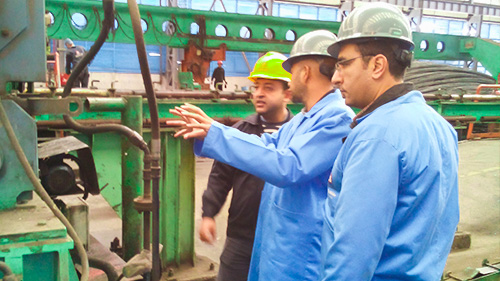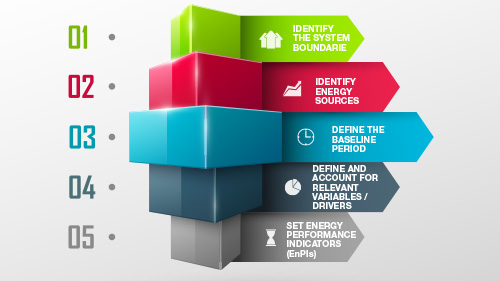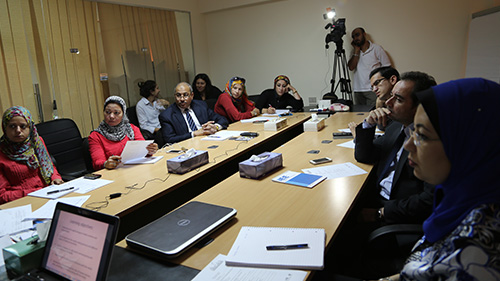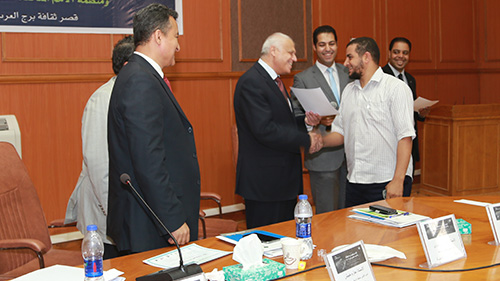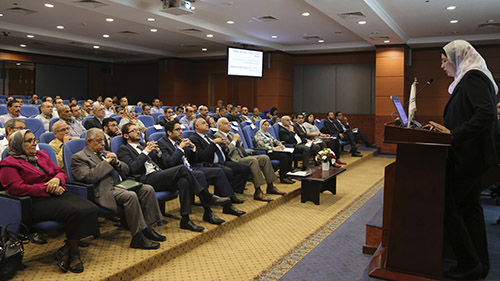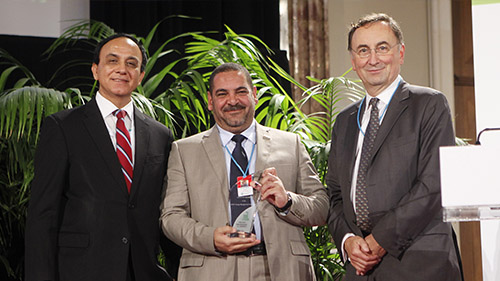A major aim of the IEE project has been to provide as broad a picture of energy efficiency as possible through benchmarking energy consumption in three energy-intensive sectors. As a result of the work completed in early 2015 in the fertilizer, cement and iron and steel sectors, for the first time Egypt has reliable and verifiable figures on energy consumption that can be used by policy makers.
In close cooperation with the Industrial Development Authority (IDA) and under the supervision of the Austrian Energy Agency, UNIDO experts first-handedly collected data for three consecutive years from 2011 to 2013 on energy consumption, production levels, energy management and production practices from participating industries.
Energy Consumption in Egypt
The industrial sector currently accounts for around 43% of all national energy consumption. Reducing this figure will be crucial to efforts to mitigate climate change and to address Egypt’s ongoing energy crisis, driven by rising demand and falling supply, in particular a fall in gas production. Egypt has therefore made the efficient use of energy resources one of the main priorities of its 2030 Sustainable Development Strategy. Through efficiency measures, energy-intensive industries can reduce energy consumption by up to 20% by taking measures to raise energy efficiency. Implementing such changes often require little or no investment, making energy efficiency one of the most cost-effective ways to reduce overall energy bills.
Benchmarking Aims
By comparing the performance of individual plants, the benchmarking studies:
• recognize best practice
• assess performance against local sector competitors
• assess performance against international competitors
The benchmarking is not limited to data collection and analysis, but includes the development of benchmarking curves and generates future projections based on different scenarios, which forecast the potential energy requirements and consumption of the sectors based on energy efficiency measures adopted. These forecasts are critical for policy making as well as for the formulation of technical support programmes, as they provide a foundation for moving industries towards more energy-efficient practices.
The Way Forward
The benchmarking study is expected to support decision makers when adopting new policies on industrial energy efficiency. It will also contribute to international competitiveness and play a critical role in the development of road maps to help guide improved energy efficiency measures in all three sectors. Only through combined efforts to develop policies with the support of all stakeholders such as decision makers and factory owners, can Egypt’s energy shift from crisis to efficiency.
Methodology
At the planning stage, the IEE project was careful to tailor UNIDO’s benchmarking methodology to the Egyptian context and define the scope and system boundaries of the research. The data collection process was carried out in cooperation with the IDA, which provided UNIDO experts with national statistics. Moreover, surveys, sessions and meetings were carried out with 26 participating plants, which worked with UNIDO experts on collecting data over the three years. The plants were closely involved in the verification of the data to ensure homogeneity and accuracy of results. UNIDO experts and consultants analyzed the results, calculated potential savings for the participating plants, made necessary statistical adjustments, and applied other correction factors to make sure results were correct.
Sustainability
The IDA is responsible for the implementation of industrial policies and will be actively involved in the application and practice of the benchmarking results. The Egyptian National Cleaner Production Center (ENCPC), a Ministry of Trade and Industry agency, aims to carry out similar benchmarking studies beyond these three sectors, starting with ceramics. ENCPC staff have received training on UNIDO methodology from national experts who participated in the benchmarking for other sectors, and who will also be involved in managing the implementation of the study.
Factory Owners and Decision Makers
One of the participating plant representatives said: “The benchmarking has rung the bell and given us a wake-up call. We are 10-50% below international best practices in energy consumption and yet we use the same technology, which makes no sense. We need to practice efficiency.”
Results
The results of the benchmarking across Egypt’s industrial sector indicate that the best performing companies require very little improvement to match internationals standards on energy efficiency, although at the lower end there is considerable room for improvement.

